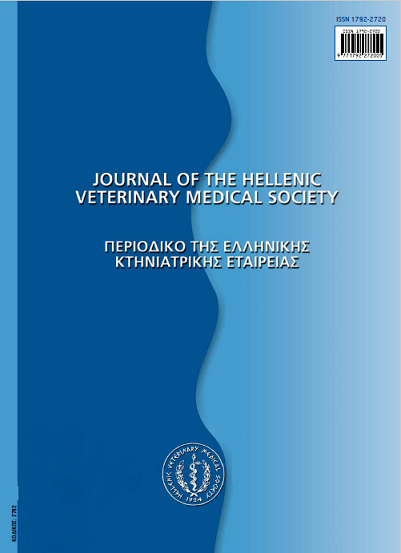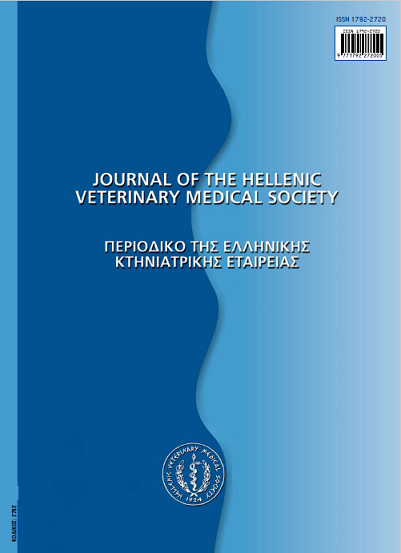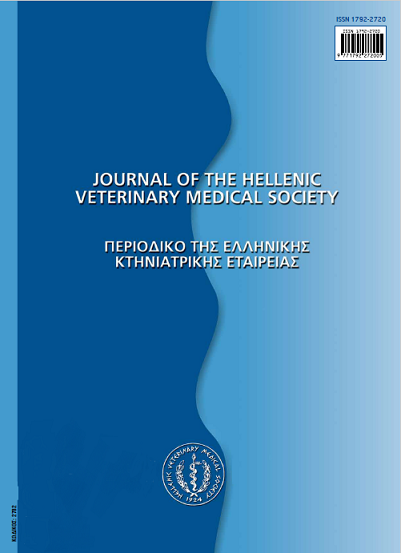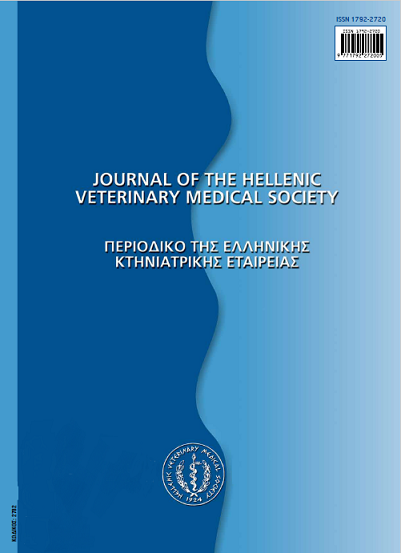Aντιβιοανθεκτικότητα και κατανομή των γονιδίων SodCI, sopE, sefA σε στελέχη Salmonella enterica serotype Enteritidis ορνίθειας προέλευσης
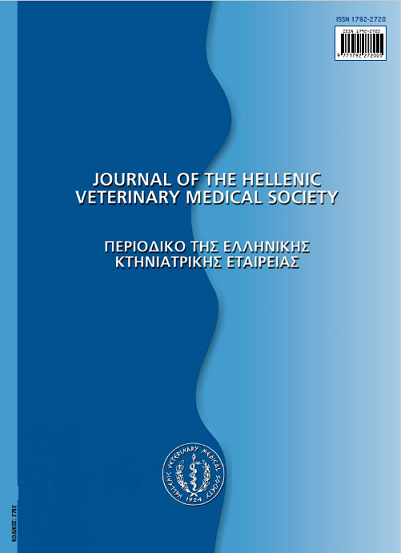
Περίληψη
Η παρούσα εργασία είχε ως στόχο να προσδιορίσει την αντιβιοανθεκτικότητα στελεχών Salmonella enteric serotype Enteritidis (SE) ορνίθειας προέλευσης, να μελετήσει την πλασμιδιο-εξαρτώμενη ανθεκτικότητα στην αμπικιλλίνη και να προσδιορίσει την κατανομή μεταξύ των στελεχών των γονιδίων sodCI, sopE και sefA. Τριάντα πέντε SE στελέχη που απομονώθηκαν από νεοσσούς ηλικίας μίας ημέρας, από όρνιθες ωοτοκίας και κρεοπαραγωγής μελετήθηκαν ως προς την ανθεκτικότητα/ευαισθησία σε δεκαέξι αντιβιοτικά. Είκοσι τρία στελέχη (65,7%) εμφάνισαν ανθεκτικότητα στην αμπικιλλίνη, πέντε στελέχη (14,3%) στην αμπικιλλίνη και την τετρακυκλίνη, τέσσερα στελέχη (11,45%) στην τετρακυκλίνη και ένα (2.9%) εμφάνισε πολυ- ανθεκτικότητα. Η ανθεκτικότητα στην αμπικιλλίνη (AmpR) και το συνδυασμό αμπικιλλίνης/τετρακυκλίνης (AmpRTeR) μεταφέρθηκε εύκολα με τη σύζευξη σε όλα τα στελέχη τα οποία – με εξαίρεση δύο- εμφάνισαν μία κοινή πλασμιδιακή ζώνη. Η μοριακή μάζα του πλασμιδίου που έφερε το γονίδιο ανθεκτικότητας στην αμπικιλλίνη προσδιορίστηκε στα 41kbμετά από πέψη του DNA με τα ένζυμα περιορισμού BamHI, HindIII, EcoRI, EcoRV και PstI. Η επαλήθευση του μεγέθους της μοριακής μάζας έγινε με την επίδεση (ligation) στο πλασμίδιο pET29c, των τμημάτων DNA τα οποία προέκυψαν μετά από πέψη με το ένζυμο περιορισμού EcoRI. Για την ανίχνευση των TEM-1 ή/και TEM-2 ß-λακταμασών, χρησιμοποιήθηκαν δύο εξειδικευμένα ζεύγη εκκινητών με τη μέθοδο της αλυσιδωτής αντίδρασης της πολυμεράσης (PCR). Τα προϊόντα της PCR έδειξαν την παρουσία του γονιδίου blaTEM-1 σε όλα τα στελέχη. Ελέγχθηκε επίσης η παρουσία των γονιδίων of SodCI, sopE, sefA με εξειδικευμένους εκκινητές της PCR. Είκοσι δύο (62,8%) στελέχη έφεραν το γονίδιο sodCI, τριάντα τρία (97,2%) το γονίδιο sopE και όλα τα στελέχη ήταν φορείς του γονιδίου sefA
Λεπτομέρειες άρθρου
- Πώς να δημιουργήσετε Αναφορές
-
EKATERINIADOU (Λ.Β. ΑΙΚΑΤΕΡΙΝΙΑΔΟΥ) L. V., BOUKOUVALA (Ε. ΜΠΟΥΚΟΥΒΑΛΑ) E., PAPI (Ρ.Μ. ΠΑΠΗ) R. M., ZDRAGAS (Α. ΖΔΡΑΓΚΑΣ) A., GIANTZI (Β. ΓΙΑΝΤΖΗ) V., & KYRIAKIDIS (Δ.Α. ΚΥΡΙΑΚΙΔΗΣ) D. A. (2018). Aντιβιοανθεκτικότητα και κατανομή των γονιδίων SodCI, sopE, sefA σε στελέχη Salmonella enterica serotype Enteritidis ορνίθειας προέλευσης. Περιοδικό της Ελληνικής Κτηνιατρικής Εταιρείας, 66(2), 70–79. https://doi.org/10.12681/jhvms.15589
- Τεύχος
- Τόμ. 66 Αρ. 2 (2015)
- Ενότητα
- Research Articles

Αυτή η εργασία είναι αδειοδοτημένη υπό το CC Αναφορά Δημιουργού – Μη Εμπορική Χρήση 4.0.
Οι συγγραφείς των άρθρων που δημοσιεύονται στο περιοδικό διατηρούν τα δικαιώματα πνευματικής ιδιοκτησίας επί των άρθρων τους, δίνοντας στο περιοδικό το δικαίωμα της πρώτης δημοσίευσης.
Άρθρα που δημοσιεύονται στο περιοδικό διατίθενται με άδεια Creative Commons 4.0 Non Commercial και σύμφωνα με την άδεια μπορούν να χρησιμοποιούνται ελεύθερα, με αναφορά στο/στη συγγραφέα και στην πρώτη δημοσίευση για μη κερδοσκοπικούς σκοπούς.
Οι συγγραφείς μπορούν να καταθέσουν το άρθρο σε ιδρυματικό ή άλλο αποθετήριο ή/και να το δημοσιεύσουν σε άλλη έκδοση, με υποχρεωτική την αναφορά πρώτης δημοσίευσης στο J Hellenic Vet Med Soc
Οι συγγραφείς ενθαρρύνονται να καταθέσουν σε αποθετήριο ή να δημοσιεύσουν την εργασία τους στο διαδίκτυο πριν ή κατά τη διαδικασία υποβολής και αξιολόγησής της.



